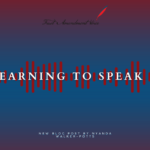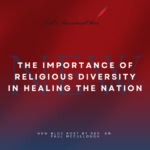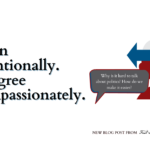
by Dan | Jan 8, 2020 | Uncategorized
 Worried about ‘fake news’? You should be. Several new studies, including one by the McCombs School of Business at The University of Texas at Austin, show that for the average person, it’s extremely difficult to recognize incorrect, misleading and outright false stories on the Internet. Even more troubling, researchers at the Massachusetts Institute of Technology found that stories found to be false by six major fact-checking services often spread 10 times faster online than legitimate news stories.
Worried about ‘fake news’? You should be. Several new studies, including one by the McCombs School of Business at The University of Texas at Austin, show that for the average person, it’s extremely difficult to recognize incorrect, misleading and outright false stories on the Internet. Even more troubling, researchers at the Massachusetts Institute of Technology found that stories found to be false by six major fact-checking services often spread 10 times faster online than legitimate news stories.
Studies also show that fake news stories with clickbait headlines in many cases are getting more engagement and shares on social media than legitimate news stories. This poses a serious threat to the freedom of the press clause in the First Amendment. That’s because fake news stories are designed to distort public perceptions about real-life events, which has led to problematic consequences such as increased public distrust of media organizations, lower subscription rates for credible news outlets, higher rates of censorship, harassment and even violence against journalists and alarming incidents of people acting upon fake news stories. Remember the “Pizzagate” scandal? In 2016, Russian operatives, Twitter bots and others manufactured the ‘news’ that Hillary Clinton ran a pizza-restaurant child-sex ring. The falsehood went viral, shaping public perception of Clinton. A North Carolina man, acting on the baseless report, went on to fire an AR-15 rifle inside the pizza restaurant in Washington, D.C. that was mentioned in the baseless article.
While misleading and false news continues to appear on the Internet, news by legitimate sources continues to be attacked as ‘fake’ news. By dismissing unfavorable news stories as “fake,” individuals, many of whom have large followings on social media and in real life, are contributing to shape negative public sentiment towards journalists and media organizations.
Discrediting legitimate news stories and/or organizations by labeling them as “fake”, combined with the proliferation and increased sophistication of truly ‘fake’ news is making it increasingly difficult for members of society to discern between fact, “alternative facts,” and fiction. This only furthers public mistrust in otherwise highly credible news outlets and allows an individual’s persuasiveness to outweigh factual reporting published by diligent journalists.
To help combat the growing issue of fake news in our society, be sure to read through FactCheck.org’s guidelines for detecting fake news stories before sharing a questionable news story on social media or dismissing something you disagree with as “fake news.”

by Dan | Dec 25, 2019 | Uncategorized
 Consumer activism, which refers to citizens influencing how goods and services are produced, marketed and delivered to consumers, has been around for years. However, the instantaneous nature of digital communications has expedited the ability for consumers to rally support for their causes and persuade companies to change how they do business.
Consumer activism, which refers to citizens influencing how goods and services are produced, marketed and delivered to consumers, has been around for years. However, the instantaneous nature of digital communications has expedited the ability for consumers to rally support for their causes and persuade companies to change how they do business.
In other words, consumer activism seeks to change how a good or service is created (especially in regards to ethical and environmental issues) through various means of protest, such as boycotting certain businesses/industries, urging others to stop using a product or service, and spending more money on products/services that are sustainably produced in terms of non-wasteful materials and ethical labor standards.
Just as Citizens United v. FEC found that corporations can assert rights to freedom of speech through monetary means, citizens can also “speak” with their consumption habits and preferences. It’s a fascinating phenomenon that many of us have witnessed yet few have consciously thought about when it comes to its effectiveness and consequences for brands and consumers alike.
To uncover the First Amendment underpinnings involved in consumer activism, let’s explore some present-day examples of it in action:
Modern Examples of Consumer Activism
There are countless examples of consumer activism in the U.S. and abroad, including some of these recent events:
- #DeleteUber (encouraged consumers to delete the ride-sharing app after numerous scandals, such as user data mismanagement and alleged profits from the Trump Administration’s travel ban)
- #DeleteFacebook (encouraging consumers to get rid of their Facebook profiles in wake of controversies like Cambridge Analytica and countless data breaches)
- Blizzard Boycott (gamers fleeing the popular video game company after it censored pro-Hong Kong gamers on its live streams and in its competitions)
- Zara fur ban (the company eliminated all animal fur products from its stores in wake of pro-animal activists’ complaints)
Is Consumer Activism Effective?
Just as early American colonists effectively initiated a revolution with the Boston Tea Party (which involved a boycott of British tea after the government monopolized the tea industry in the thirteen colonies through lowered taxes on British East India Company goods), consumer boycotts are often effective nowadays as well.
As consumers express their demands through their purchasing decisions, companies are forced to adapt to changing preferences in the market. Activists have successfully persuaded numerous companies to adopt more environmentally sustainable manufacturing practices (using more eco-friendly, recyclable materials) and advocated for fairer labor practices and higher wages for workers both in the U.S. and abroad.
Consumer activism isn’t always successful, but it’s nevertheless an important trend that aligns closely with the freedoms of speech and petition outlined in the First Amendment of the Constitution.
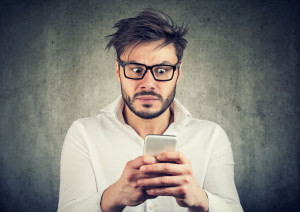
by Dan | Dec 11, 2019 | Uncategorized
 Fake news has been around for some time, but it’s been brought to light recently in the context of the 2016 presidential election. But the reality is that — to some extent — misinformation has been around since the beginning.
Fake news has been around for some time, but it’s been brought to light recently in the context of the 2016 presidential election. But the reality is that — to some extent — misinformation has been around since the beginning.
Social media is perhaps the most egregious venue today, since it has the ability to transmit and amplify information quicker than when we could share information only person to person. This makes it even more important to be vigilant when consuming information online so we can avoid falling prey to false or misleading information and perpetuating it.
Here’s how to do you due diligence:
Check the source.
What is the URL? Some fake news sites will try to spoof credible ones, using a similar URL and logo. For example, ABC News could appears as abc-news.com with a similar logo, to trick people into engaging. Also, look at the website’s “Contact” and “About Us” pages. If there’s no editorial contact or the description of their purpose and mission is vague or missing altogether, that could be a sign that the site lacks legitimacy.
When in doubt, do a quick Google search of the website. Is there a history of bad press about the source? Some sites have been outed as venues for foreign governments to intervene in our elections.
Dive deeper.
Sometimes bad actors will use outrageous headlines to grab attention and drive traffic.. Before sharing any piece of content, read the piece in its entirety. Does the article have a byline? If so, does the author have a track record of content? Did the writer interview reputable sources and include direct quotes and links to supporting information? Is the writing clean or is it chock full of errors? All of this matters, because legitimate journalists conduct themselves in a legitimate manner, while trolls aren’t concerned with following journalistic standards and practices.
Look at the big picture.
If you’re on the fence about the credibility of a source, do some research. Are other outlets reporting on the same matter? Do you see recurring themes as far as the facts being reported? People or organizations with malicious intentions will create their own narrative and it’s usually not supported by other accounts.
In short, the Era of Fake News requires critical thinking. Everyone could stand to be more cautious about their approach to media consumption. How do you ensure you’re not engaging in fake news? Share your tips on our Facebook Page.

by Dan | Nov 27, 2019 | Uncategorized
 The First Amendment applies to many areas of civilian life, including our educational systems. For example, the courts have recognized that students are guaranteed rights prescribed by the First Amendment.
The First Amendment applies to many areas of civilian life, including our educational systems. For example, the courts have recognized that students are guaranteed rights prescribed by the First Amendment.
However, it wasn’t always this way. As our country evolved so did its laws. When adopted in 1791, the First Amendment applied only to Congress and the federal government. So when the public school system was formalized in the 19th century, students could not make First Amendment claims.
This censorship lasted into the 20th century. In fact, the Wisconsin Supreme Court ruled that school officials could take punitive action against two students who had an unflattering poem published in the local newspaper. Why was this permitted? According to the court, “such power is essential to the preservation of order, decency, decorum, and good government in the public schools.” What followed was a dangerous precedent. For example, In 1915, the California Court of Appeals ruled that school officials could suspend a student for challenging the administration.
The 1940s brought some fresh air with the flag-salute case of West Virginia v. Barnette. It was then that the U.S. Supreme Court explicitly extended First Amendment protection to students attending public schools. The Barnette case was rooted in religious freedom. Several students who were Jehovah’s Witnesses refused to salute the flag because their faith discourages them from showing allegiance to any worldly government.
School officials chastised the students and their parents. The students then sued, claiming a violation of their First Amendment rights. This time, the court ruled in the students’ favor, holding that the free speech and free exercise of religion provisions of the First Amendment guarantee the right of students to be excused from this exercise on the account of religious beliefs.
There are more recent cases of violations of free speech in a school setting. Earlier this month, the ACLU sued the Smith County School System in Tennessee because according to the organization, “school officials regularly incorporate prayer into school events and preach to students in violation of the separation of church and state.”
Public schools should be vehicles for education, not religious indoctrination. That’s why we continue to fight for First Amendment rights in and outside the classroom. Will you join us?
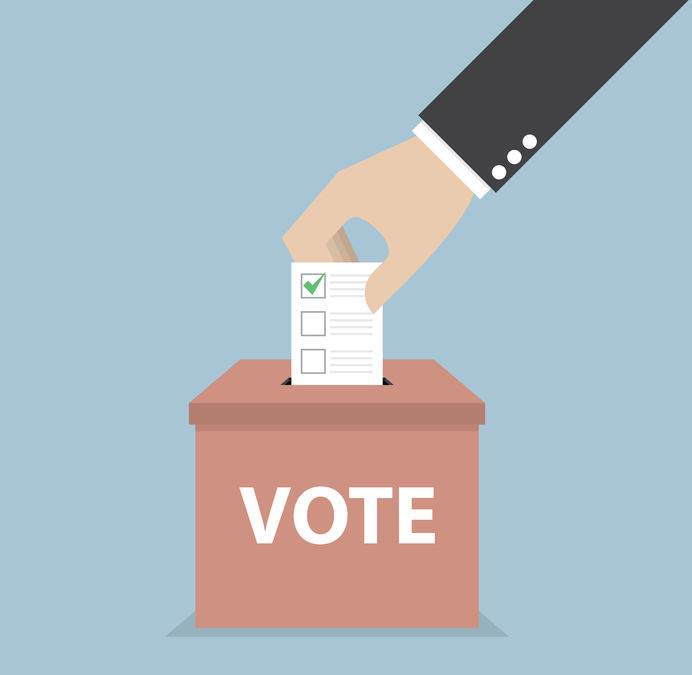
by Dan | Nov 13, 2019 | Uncategorized
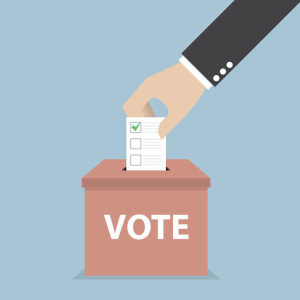 There is a long history of voter suppression for various groups in the United States, with the most common examples being African Americans and women. Although these groups have since obtained the right to vote through the 15th and 19th Amendments respectively, there still exist barriers to voting for other groups, such as convicted felons, mentally disabled individuals, elderly folks without the means to obtain new ID cards and/or go to the polls, and even college students.
There is a long history of voter suppression for various groups in the United States, with the most common examples being African Americans and women. Although these groups have since obtained the right to vote through the 15th and 19th Amendments respectively, there still exist barriers to voting for other groups, such as convicted felons, mentally disabled individuals, elderly folks without the means to obtain new ID cards and/or go to the polls, and even college students.
As the Pacific Standard argued in a December 2018 article, access to voting is one of the most important issues related to freedom of speech in a democratic society, yet we rarely discuss possible strategies for removing barriers to voting access. In regards to college students specifically, what’s preventing them from voting? Let’s unpack this little-known issue further:
Lack of Poll Accessibility
As the New York Times reported in October 2019, more and more states and municipalities are imposing restrictions on college students’ access to polls. For example, the Texas Legislature recently outlawed polling locations that don’t stay open for the entirety of the early voting period (12 days), which effectively banned on-campus polls that could only operate for some of that voting period due to funding and other resource scarcity.
Other restrictions that currently hinder the accessibility to voting rights for college students include poll parking requirements (some states – like Florida – have required polling locations to have a set number of non-permit parking spaces available) and limited/no access to early voting options.
It’s incredibly important for polls to have a presence on college campuses because students with limited access to transportation are already on campus for their classes, which presents a timely opportunity to cast their vote. Although the misconception that young people don’t vote continues to persist – despite youth turnout in 2018 being the highest it’s ever been in 25 years – college students nevertheless deserve access to polls, just like any other American citizen.
Complicated Residency Issues
For out-of-state college students, residency is difficult to establish for both financial aid and voting. Some states prohibit the use of out-of-state driver’s licenses as valid forms of ID for voting, while other states forbid the use of student ID cards as valid forms of ID for voting purposes. This means that out-of-state students may be unable to vote in the place they currently live and they’re physically unable to go home and vote in their hometowns.
Valid Voter ID Requirements
Speaking of voter ID requirements, obtaining a new ID card can be a logistical and financial challenge for many college students, regardless of their state of residency. If they don’t have a valid driver’s license from the state they attend college in, they may have to fork over more money to obtain a new form of identification just to ensure access to the polls.
For some students however, this process is too inconvenient, too costly and too time-consuming, so they end up not voting at all.
In the U.S., we should not prevent citizens from voting simply because they do not have the means to get to the polls and/or the financial means to obtain a valid form of ID. The same is true for college students: if they want to cast a vote, why shouldn’t we be helping them express themselves through the most democratic form of free speech we have in this country?

by Dan | Oct 23, 2019 | Uncategorized
 In wake of the ongoing protests in Hong Kong and escalating tensions between China and other powerful countries like the United States, you might have heard about controversies involving American corporations like Blizzard Entertainment, Apple, Disney, several U.S.-based airlines and others that are giving in to censorship pressure from China.
In wake of the ongoing protests in Hong Kong and escalating tensions between China and other powerful countries like the United States, you might have heard about controversies involving American corporations like Blizzard Entertainment, Apple, Disney, several U.S.-based airlines and others that are giving in to censorship pressure from China.
For context, the Chinese Communist Party, which has been ruling China for 70 years now, has severe restrictions on access to information and freedom of speech for its citizens. In our increasingly globalized society, plenty of Western media, products and celebrities are surging in popularity among the Chinese. The spread of Western media — particularly films and TV shows — has been particularly concerning for the CCP, since it would like to propagate rather different values and worldly perspectives than what is expressed through Western media.
These values and perspectives include democracy, freedom of speech/assembly, and even the fundamental bodily autonomy of individuals. The United Nations is being asked to investigate Chine for allegedly being involved in the murder of ethnic minorities for the purpose of harvesting their organs for transplants.
If China is vehemently against American ideals of freedom and democracy, then why are American companies supporting China by silencing dissenters and/or taking actions aimed to appease the CCP? Let’s investigate what’s going on:
The Film and Television Industry
American companies have a relatively long history of catering to their biggest market’s preferences and demands, but appeasing China is a relatively newer phenomenon that has gained traction since the 1990s and early 2000s. This is particularly important for the film and television industry, which has faced substantial profit reductions in recent years due to Internet-enabled pirating, steep competition from video streaming platforms, and declining consumer cinema attendance rates.
To expand their market share and boost revenue, film and television companies have begun altering certain content to ensure their movies and shows will be allowed to play in mainland China. In other words, as a 2018 article in Global Media and China put it: “to improve Hollywood movies’ success in China and to secure a profitable market share of China’s box office, Hollywood studios need to have a good relationship with China.”
Censorship practices implemented to appease China include:
- Casting a white actor to portray an Asian villain (The Mandarin) in Ironman 3
- Casting popular Chinese actors and actresses in blockbuster films like X-Men: Days of Future Past and The Meg
- Removing any content that could be considered pornographic, such as Rose’s nude scene in Titanic
- Casting a white actress (Tilda Swinton) to play a traditionally Tibetan character in Doctor Strange (in addition to depicting Stephan Strange’s spiritual awakening as occurring in Nepal, instead of the original comics’ location, Tibet)
The list of movies courting Chinese viewers by including or removing certain talent, settings and storylines could go on and on — but what about other American companies beyond the film and television industry?
Recent Censorship Controversies
As China analyst Matt Schrader said in an Associated Press article published on Oct. 10, “That’s the price you pay if you want to be in the market. You have to abide by demands to censor information: anything that paints the party or its history, or its top leaders, in an unflattering light, or disagrees with their preferred portrayal of China as a country.”
This scenario has played out for numerous American companies and organizations: Apple (removing VPN apps and police map apps in places like Hong Kong), the NBA (denouncing a pro-Hong Kong tweet from the general manager of the Houston Rockets), and Blizzard Entertainment (suspending a pro Hearthstone player and withholding his prize money after making a pro-Hong Kong statement in a live broadcast).
Why Should American Citizens Care?
These are just some of the many examples of American companies defending China and/or silencing people advocating places like Hong Kong and Tibet (not to mention the hundreds of thousands — if not millions — of Uighur Muslims imprisoned in “reeducation camps” in China).
This should be tremendously alarming for anyone who cares about free speech and democracy, American or not. Is appeasing China’s Communist Party through speech suppression and all-out silencing worth the erosion of democratic ideals around the world? Of course not — which is why we must stay vigilant, continue to bravely advocate for everyone’s rights to freedom of speech and critically evaluate the companies we purchase products and services from.
Boycotting these companies — as former customers around the world have begun to — may or may not make a difference when it comes to standing up to China or caving in to their censorship demands. But it’s crucial to remain informed about what is going on beyond our borders, especially when it involves free speech issues that are subtly starting to infiltrate our lives as well.

 Worried about ‘fake news’? You should be. Several new studies, including one by the McCombs School of Business at The University of Texas at Austin, show that for the average person, it’s extremely difficult to recognize incorrect, misleading and outright false stories on the Internet. Even more troubling, researchers at the Massachusetts Institute of Technology found that stories found to be false by six major fact-checking services often spread 10 times faster online than legitimate news stories.
Worried about ‘fake news’? You should be. Several new studies, including one by the McCombs School of Business at The University of Texas at Austin, show that for the average person, it’s extremely difficult to recognize incorrect, misleading and outright false stories on the Internet. Even more troubling, researchers at the Massachusetts Institute of Technology found that stories found to be false by six major fact-checking services often spread 10 times faster online than legitimate news stories.




 There is a long history of voter suppression for various groups in the United States, with the most common examples being African Americans and women. Although these groups have since obtained the right to vote through the 15th and 19th Amendments respectively, there still exist
There is a long history of voter suppression for various groups in the United States, with the most common examples being African Americans and women. Although these groups have since obtained the right to vote through the 15th and 19th Amendments respectively, there still exist 
 In wake of the ongoing protests in Hong Kong and escalating tensions between China and other powerful countries like the United States, you might have heard about controversies involving American corporations like Blizzard Entertainment, Apple, Disney, several U.S.-based airlines and others that are
In wake of the ongoing protests in Hong Kong and escalating tensions between China and other powerful countries like the United States, you might have heard about controversies involving American corporations like Blizzard Entertainment, Apple, Disney, several U.S.-based airlines and others that are 

